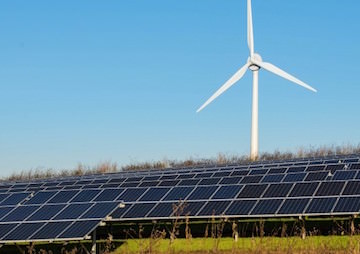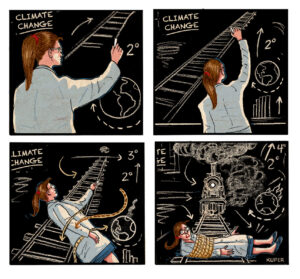Wind Met 99% of Scots’ Power Needs in October, and Other Green Successes
The Trump strategy of slapping penalties on alternative technologies and giving fossil fuels subsidies has a very limited shelf life. Informed Comment
Informed Comment
Wind and solar keep falling in price – each fell 6% in 2016. That fall was not as big as the two previous years, but there is every reason to expect price drops much bigger in coming years, as new technology makes the move from basic science to implementation. The Trump strategy of slapping penalties on these technologies and giving fossil fuels subsidies has a very limited shelf life, since there aren’t enough resources in the world to stand against this kind of inexorable progress.
Wind turbines in Scotland during the month of October, driven by unusually strong gales, generated enough electricity to supply 99% of the country’s power needs, taking into account residential, industrial and business sectors! And if we just looked at the residential market, the wind turbines could have powered 4.5 million homes! One catch: Scotland only has about 2.45 million households!
On average through the year, Scotland now gets 60% of its electricity from renewables and is on track to get 100% from green sources by 2020. One impediment standing in the way is that the English-dominated government of the UK is deeply tied to BP and other fossil fuel companies and keeps trying to hobble green energy. In the UK as a whole, green energy only produces 29% of electricity.
And then there is Sweden. GE and Green Investment Group have raised some $900 mn. for the largest onshore wind farm in Europe. To be built in northern Sweden, it will have a name plate capacity of 650 megawatts and will be operational in only two years. With increasingly inexpensive battery storage or e.g. hydropump storage, such wind farms could generate up to half as much steady electricity as a small nuclear reactor. (Toshiba is putting in huge battery storage near a major wind farm in Texas.)
In Sweden, this one wind farm will increase the country’s wind power by 12.5%. Sweden is already a relatively low-carbon country for an industrial economy, though it can do substantially better. Some 83 per cent of the country’s electricity comes from nuclear and hydroelectric power. Only 7% comes from wind at the moment.
Still, the average Swede emits over 4 tons of carbon dioxide a year. That is better than Europe’s average 6 tons and way better than the US average of 16 tons per year per person (!!!). But 4 tons a person is still huge, given that CO2 is like setting off atomic bombs in the atmosphere. The new Markbygden ETT wind farm will be an important step toward carbon-free Swedish electricity. Of course, that has to be combined with switching to electric vehicles and adopting low-carbon agricultural and building techniques if we are to move to a net carbon zero civilization.
Your support is crucial...As we navigate an uncertain 2025, with a new administration questioning press freedoms, the risks are clear: our ability to report freely is under threat.
Your tax-deductible donation enables us to dig deeper, delivering fearless investigative reporting and analysis that exposes the reality beneath the headlines — without compromise.
Now is the time to take action. Stand with our courageous journalists. Donate today to protect a free press, uphold democracy and uncover the stories that need to be told.







You need to be a supporter to comment.
There are currently no responses to this article.
Be the first to respond.